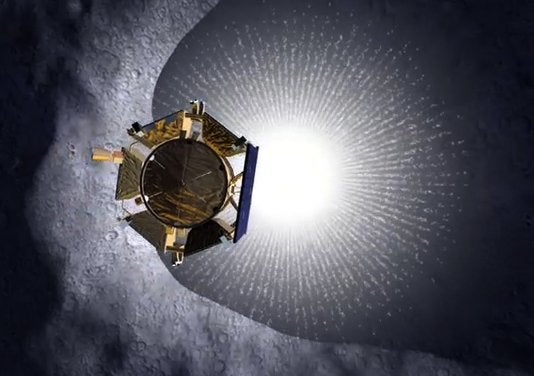
*Watch video and see pictures below*
UPDATE: The AP reports that NASA's LCROSS mission has successfully bombed the moon in the quest to find water in space.
NASA has successfully bulldozed two spacecraft into the moon's south pole in a search for hidden ice, but without the promised live photos.
First a 2.2-ton empty rocket hull smacked the moon's south pole at 7:31 a.m. EDT Friday. Then four minutes later the camera-and-instrument laden space probe made its death plunge.
On Twitter, users expressed disappointment with the moon bombing, many expressing frustration that whey were not able to see the anticipated plume of moon debris. One user commented:
Dear NASA, Now #lcross is all over I'm going back to garden to see if my veggies are growing bigger. It might be more exciting.
Watch a live video of NASA's LCROSS mission to bomb the moon below.
Visit msnbc.com for Breaking News, World News, and News about the Economy
Read more about the moon bombing on HuffPost here.
As we wrote here, the LCROSS (Lunar CRater Observing and Sensing Satellite) mission will send a missile traveling at twice the speed of a bullet to blast a hole in the lunar surface near the moon's South pole.
This isn't a declaration of intergalactic war: The missile hit the lunar surface at the moon's South pole, an area scientists estimate may have billions of tons of trapped ice.
NASA has released an incredible video simulation of what they expected the crash to look like. Watch it below, then scroll down for photos.
The actual impact occurred early in the morning on October 9, at about 7:30 am EDT/4:30 am PDT (11:30 UT), according to NASA:
The Centaur rocket will strike first, transforming 2200 kg of mass and 10 billion joules of kinetic energy into a blinding flash of heat and light. Researchers expect the impact to throw up a plume of debris as high as 10 km.
Close behind, the LCROSS mothership will photograph the collision for NASA TV and then fly right through the debris plume. Onboard spectrometers will analyze the sunlit plume for signs of water (H2O), water fragments (OH), salts, clays, hydrated minerals and assorted organic molecules.
NASA expected the blast to be so large that it could be seen from earth through telescopes 10-to-12 inches long (or larger). Any place west of the Mississippi River was a potential observing site, with Hawaii and Pacific coast states the best places to watch the impact. However, many reported difficulty viewing the plume of moon debris generated by the rocket.
For real-time updates, follow the LCROSS mission on Twitter at @LCROSS_NASA, or follow the life Twitter feed below.
You can also find updates on the official LCROSS flight director's blog. The official NASA viewer's guide is here.
See pictures below and read more on HuffPost here.